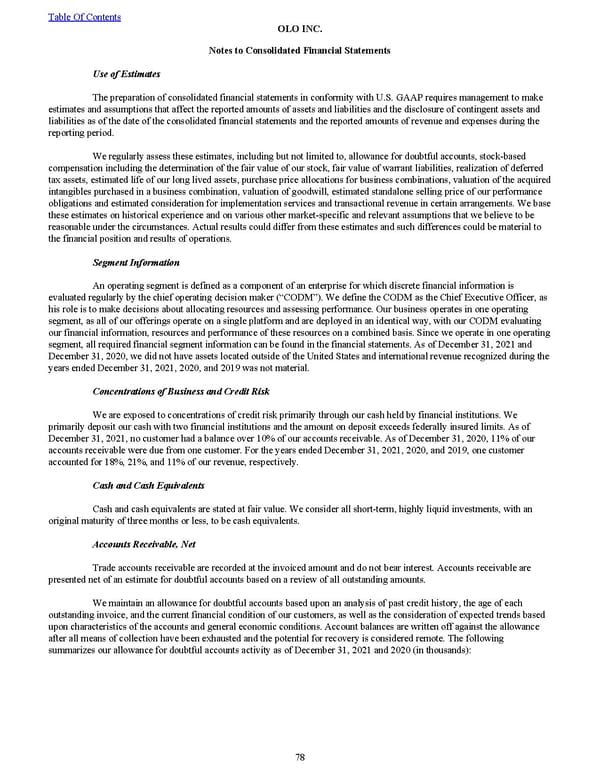Use of Estimates The preparation of consolidated financial statements in conformity with U.S. GAAP requires management to make estimates and assumptions that affect the reported amounts of assets and liabilities and the disclosure of contingent assets and liabilities as of the date of the consolidated financial statements and the reported amounts of revenue and expenses during the reporting period. We regularly assess these estimates, including but not limited to, allowance for doubtful accounts, stock-based compensation including the determination of the fair value of our stock, fair value of warrant liabilities, realization of deferred tax assets, estimated life of our long lived assets, purchase price allocations for business combinations, valuation of the acquired intangibles purchased in a business combination, valuation of goodwill, estimated standalone selling price of our performance obligations and estimated consideration for implementation services and transactional revenue in certain arrangements. We base these estimates on historical experience and on various other market-specific and relevant assumptions that we believe to be reasonable under the circumstances. Actual results could differ from these estimates and such differences could be material to the financial position and results of operations. Segment Information An operating segment is defined as a component of an enterprise for which discrete financial information is evaluated regularly by the chief operating decision maker (“CODM”). We define the CODM as the Chief Executive Officer, as his role is to make decisions about allocating resources and assessing performance. Our business operates in one operating segment, as all of our offerings operate on a single platform and are deployed in an identical way, with our CODM evaluating our financial information, resources and performance of these resources on a combined basis. Since we operate in one operating segment, all required financial segment information can be found in the financial statements. As of December 31, 2021 and December 31, 2020 , we did not have assets located outside of the United States and international revenue recognized during the years ended December 31, 2021 , 2020 , and 2019 was not material. Concentrations of Business and Credit Risk We are exposed to concentrations of credit risk primarily through our cash held by financial institutions. We primarily deposit our cash with t wo financial institutions and the amount on deposit exceeds federally insured limits. As of December 31, 2021 , no customer had a balance over 10% of our accounts receivable. As of December 31, 2020 , 11% of our accounts receivable were due from one customer. For the years ended December 31, 2021 , 2020 , and 2019 , one customer accounted for 18% , 21% , and 11% of our revenue, respectively. Cash and Cash Equivalents Cash and cash equivalents are stated at fair value. We consider all short-term, highly liquid investments, with an original maturity of three months or less, to be cash equivalents. Accounts Receivable, Net Trade accounts receivable are recorded at the invoiced amount and do not bear interest. Accounts receivable are presented net of an estimate for doubtful accounts based on a review of all outstanding amounts. We maintain an allowance for doubtful accounts based upon an analysis of past credit history, the age of each outstanding invoice, and the current financial condition of our customers, as well as the consideration of expected trends based upon characteristics of the accounts and general economic conditions. Account balances are written off against the allowance after all means of collection have been exhausted and the potential for recovery is considered remote. The following summarizes our allowance for doubtful accounts activity as of December 31, 2021 and 2020 (in thousands) : Table Of Contents OLO INC. Notes to Consolidated Financial Statements 78
 2022 10K Page 84 Page 86
2022 10K Page 84 Page 86